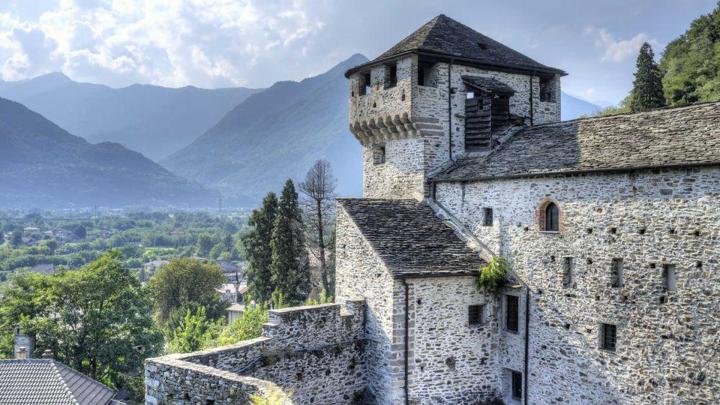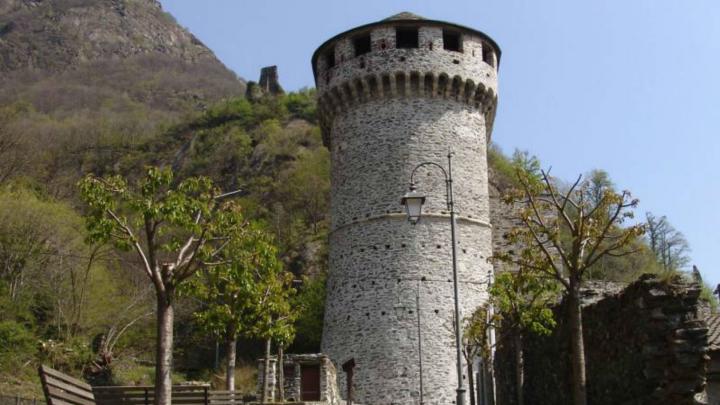The construction of the Castello di Vogogna probably dates back to 1348 when the region was under the control of the archbishop Giovanni Visconti. From 1410 to 1425, Vogogna represented a centre of resistance against enemy invasions. In 1446 the domain was handed over, together with the lower Ossola region, to the Borromeo family who remained its owners until 1797. The village crisis halfway through the sixteenth century brought the fortress into decline, to the extent that in a few years it was transformed into a prison and remained as such until the beginning of the nineteenth century. Ancient documents refer to a fortress, using this term both for the castle in the village and the fortification located on a high cliff. Indeed, the two castles are linked: the fortress is constructed with the castle so as to defend it. The common origin is evidenced by the presence of square towers in both constructions, while the semicircular ones were built during the restoration carried out by the Borromeo family during the late fifteenth century. Despite the progressive decline, the castle still presents the massive and elegant semicircular tower, surmounted by a projecting structure, supported by stone brackets onto which the trapdoors open. The Guelph battlements served to defend the rampart walk and to support the sloping roof. The castle itself appears as a solid construction, which developed between the tower facing towards the village and the square tower, standing against the mountain. In 1798, after three centuries of Borromeo rule, the castle became the property of the comune and was used as a prison for delinquents and political prisoners. After a long period of dereliction, the first restoration phase was started in 1990, ending with the inauguration of the external courtyards and garden completed eight years after.


